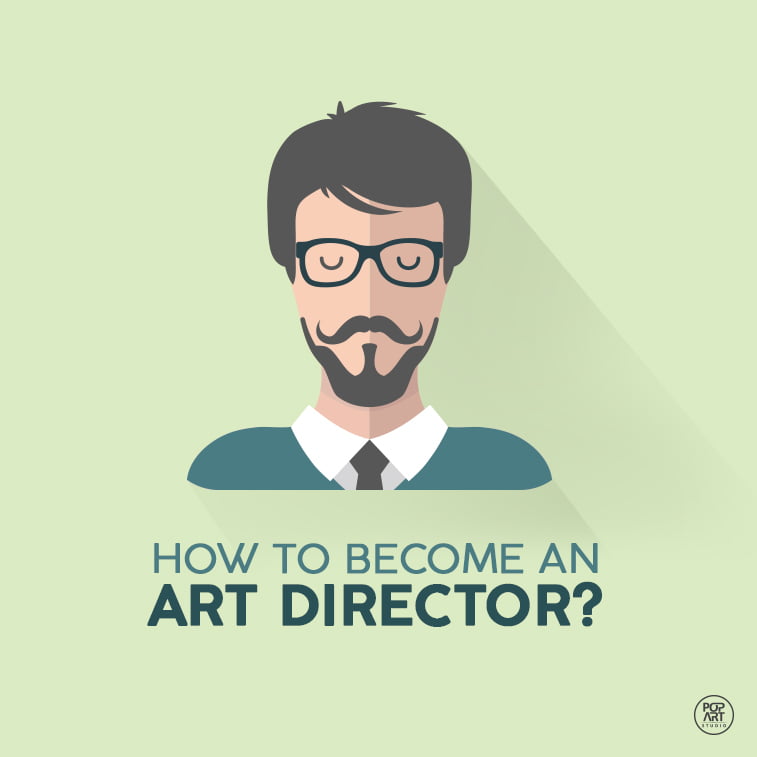Have you ever wondered what a job title “Art Director” actually means? Is it solely graphic-design-oriented, or can someone have it in other business spheres? We have talked to our Art Director here at PopArt Studio, and these are some of the things we have learned.
Art Director vs. Graphic Designer
Many people do not distinguish between Graphic Designers and Art Directors. Even though probably every design agency or company comes up with its own titles (e.g. Pixel Guru, Photoshop Master), there still has to be a clear distinction between these two titles.
Graphic Designer is a professional in the graphic design and arts industry who creates graphics by agglomerating images, typography or motion graphics into a whole (source of definition: Wikipedia).
On the other hand, Art Director can be a role in many industries, such as publishing, advertising, marketing, fashion, theater, film & television, the Internet and video games (source: SlideShare). This person is different from a Graphic Designer in terms of vision and leadership – Art Directors are in charge of the entire visual appearance that is supposed to be “psychologically appealing” to a target audience (source: Wikipedia).
Maybe the biggest difference between an Art Director and a Graphic Designer is that Art Directors work more with people than with computers.
What Does an Art Director Actually Do?
Art Directors are also called Creative Directors. As the title itself says, their job is to be in charge of the creative processes that are usually at the border with art (but isn’t graphic design truly an art? We think it is.).
Being an Art Director no longer means what it used to – a one-dimensional job having to do with print. It is now print-, graphic-, web-, and social-related.
Art Directors are usually heads of design teams, those who meet the clients, representing the brand and try to do everything possible to meet their expectations and produce quality – including the web and social media.
Their duties involve:
- talking to clients about the style and approach
- coming up with the best visual concept
- determining concepts, images, art, and other design elements to be used
- supervising the team and reviewing the artwork
- developing budget and deadlines (and making sure everyone sticks to them)
- presenting the design to clients
Tips for Becoming an Art Director
Even though it will depend almost 99% on your employer whether they will hire you as an Art Director or not, they will most definitely look for these things in you. So, in order to become an Art Director, one should have the following set of skills (or at least the majority of them):
Learn about your job
Education is the key for every job. When it comes to Art Directorship, and the graphic arts in general, formal education often plays a small role in finding a job. On the other hand, skill is what is appreciated. In order to obtain skills, one needs to learn about them. The more you know, the better you will do in life, and this is a simple truth.
Have a killer portfolio
An awesome portfolio will get you noticed. Even if you are a graduate or a junior, having little or almost no projects in your portfolio should not stop you.
What drives us all is motivation: be motivated to do things pro bono at first – a couple of great projects that will be a good representation of your skills and will show that you are more than eager to succeed in this job. These will further lead to people putting a good word for you, thus making more connections and eventually reaching the right people.
Be adaptable
Today’s world is ever-changing and it often happens that unexpected events occur or take out of control without even allowing us to get a grip of ourselves and manage them properly.
For example, what happens when your designer’s Photoshop crashes right before the end of a project, deleting all data and files? Art Directors know that this cannot happen in their teams because they keep copies of important files stored on the cloud. What else would you do?
Manage time
Time management is, naturally, one of the skills everyone will eventually need. When it comes to doing business and having clients dictate deadlines for you, you will probably be forced to learn this in practice. However, if you are well-prepared and know who needs to do what and what needs to be done in what time – your tasks and projects will be finished even faster than you would have thought.
Hard work is what you should expect (even long hours), so do not kid yourself that it will be a slow ride. Expect the unexpected, because you will be riding that roller coaster with your team.
Manage (creative) criticism
Art directorship has got much to do with management; in fact, Art Directors do manage their design teams, even when the times are rough.
When someone makes a mistake, you manage it; when someone misses a deadline, you manage it; when someone criticizes your work, you manage it (and learn from the experience); when someone is falling behind due to laziness – you help them find their grip and manage the situation.
And most of all, you learn to listen and offer creative solutions to your team.
Have a vision
People who see more and further than others are usually those who have what it takes to be an Art Director. Visionaries and innovators will always be able to improve the existing piece of slum because they do not see what others see – they see and want more.
Be creative and passionate
Even though lately this may have become a cliché, but creativity (and even quirkiness) is now considered maybe the biggest asset in design.
One has to step out of the boundaries of regular and see their inner world to achieve heights. And, what fuels such people? Why, passion, of course. You need to be passionate about your job and you will get noticed – and reach that second star to the right.
Did you find this article about Art Directors useful? Do you have something to add? Make sure to tell us in the comments section below, so that we can improve and update it.
Like this? Read more:





